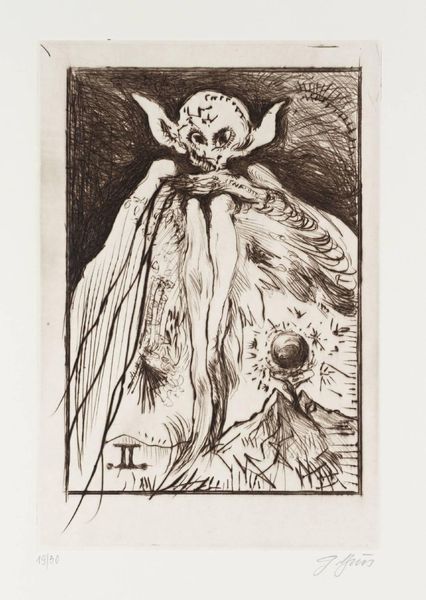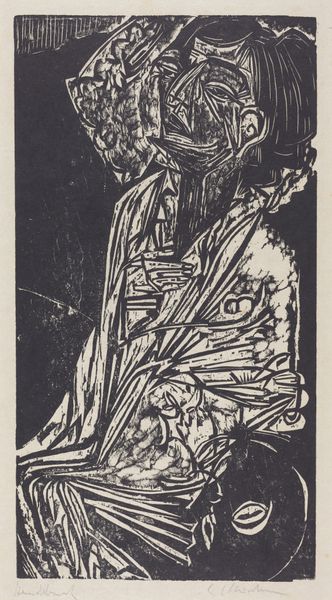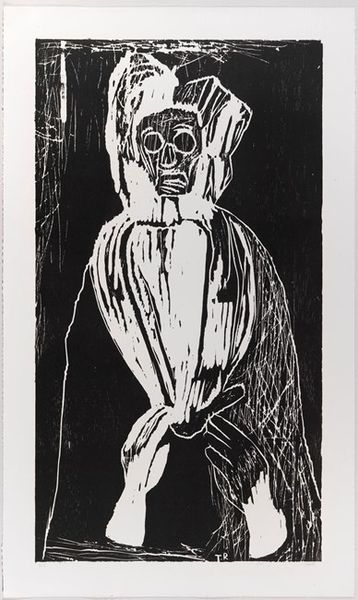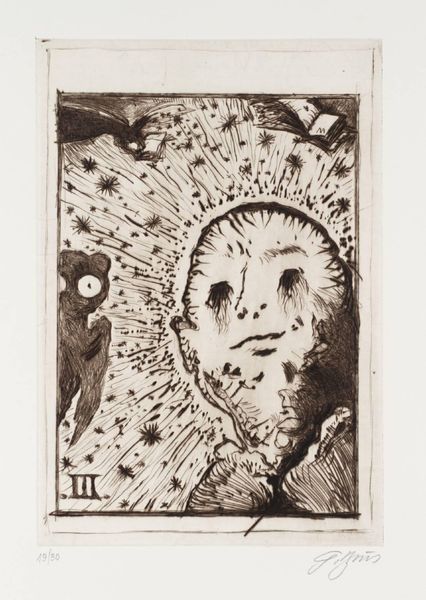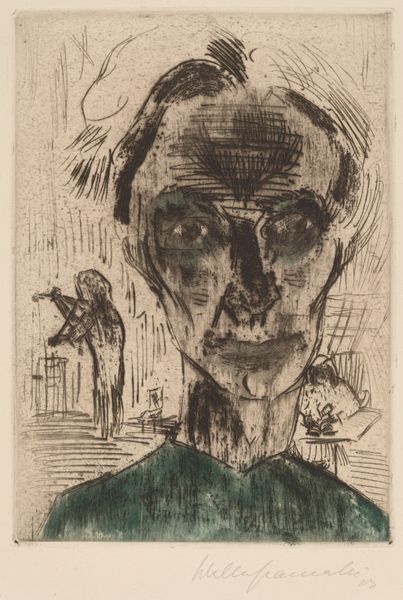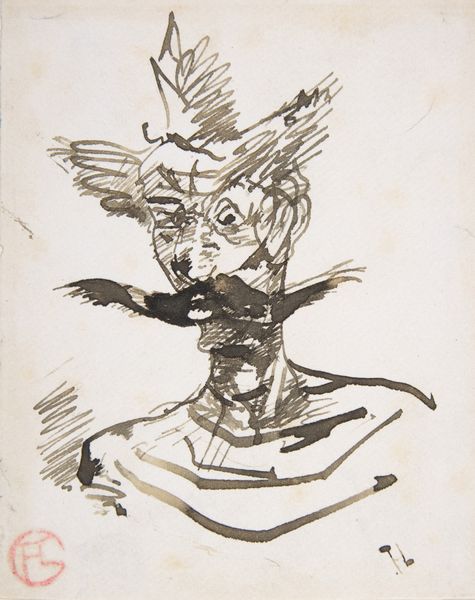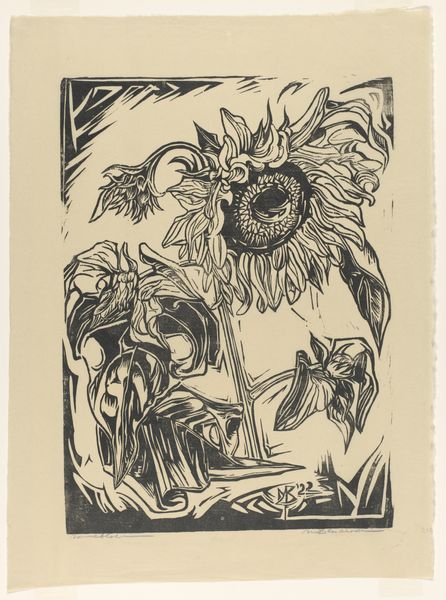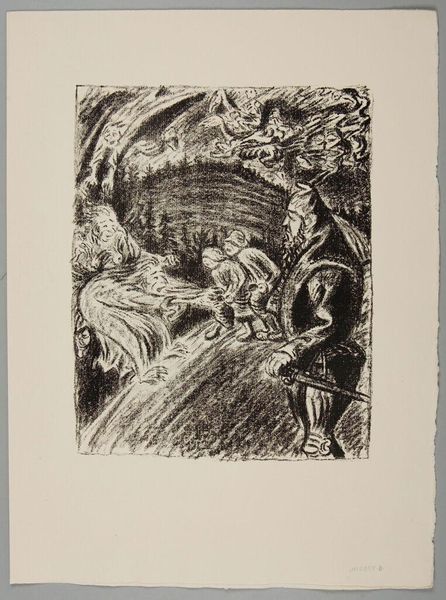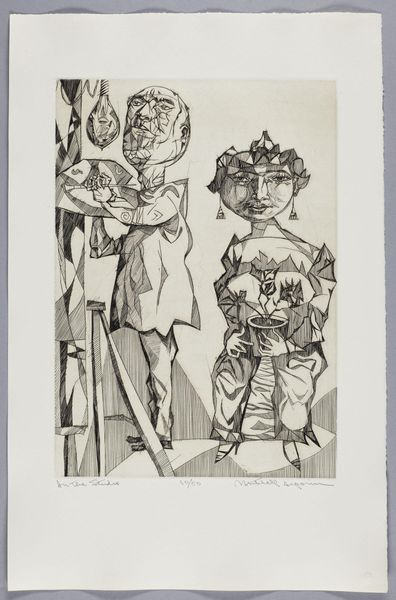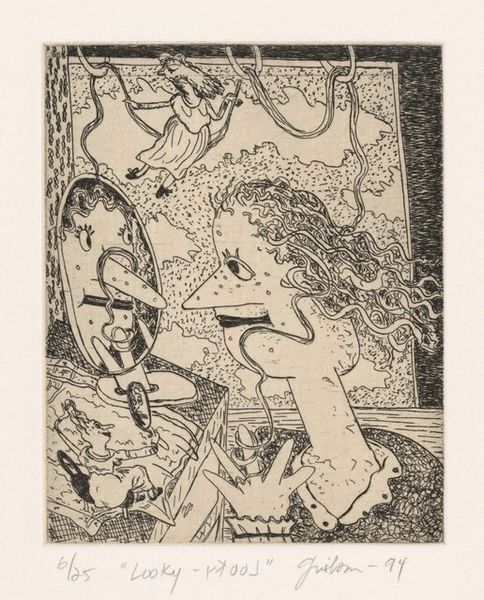![[no title] by Günter Brus](/_next/image?url=https%3A%2F%2Fd2w8kbdekdi1gv.cloudfront.net%2FeyJidWNrZXQiOiAiYXJ0ZXJhLWltYWdlcy1idWNrZXQiLCAia2V5IjogImFydHdvcmtzLzIzMDlkM2JkLTFjMzItNGE0OS05ZTdhLWE1MjczYzBjZjQyNS8yMzA5ZDNiZC0xYzMyLTRhNDktOWU3YS1hNTI3M2MwY2Y0MjVfZnVsbC5qcGciLCAiZWRpdHMiOiB7InJlc2l6ZSI6IHsid2lkdGgiOiAxOTIwLCAiaGVpZ2h0IjogMTkyMCwgImZpdCI6ICJpbnNpZGUifX19&w=3840&q=75)
Dimensions: image: 238 x 167 mm
Copyright: © Günter Brus | CC-BY-NC-ND 4.0 DEED, Photo: Tate
Curator: This etching by Günter Brus, part of the Tate collection, confronts us with imagery that's both unsettling and strangely evocative. What's your initial take? Editor: Immediately, I'm struck by the skull-like form hovering over...is that a landscape? It feels like a dream, a slightly nightmarish one, where the boundaries between life and death blur. Curator: That ambiguity is key. Brus, known for his radical body art, often explored themes of societal constraint and individual trauma. We should consider that this etching, though small, engages with power structures. Editor: Yes, I feel it. The rawness of the etching style, almost frenetic, emphasizes a sense of unease. It makes me think of suppressed emotions, the kind that bubble up in fragmented, distorted ways. Curator: It also speaks to the broader context of postwar Austrian art, which challenged conservative norms and grappled with the legacies of war and authoritarianism. Editor: I guess it's a testament to the power of art to not only reflect but also to dissect the anxieties of its time. Curator: Precisely. It's a stark reminder that art can be a powerful tool for challenging the status quo. Editor: Totally. It's stuck with me, the way it has me thinking.
